Currently, this is the most expensive TP-LINK wireless router I have purchased, one of the few products under 2000 yuan that is equipped with a 2.5G port. Let’s see if it can compete with ASUS without discussing the firmware, by taking a look inside.
The packaging of the TP-LINK XDR6060 is quite large and hefty:
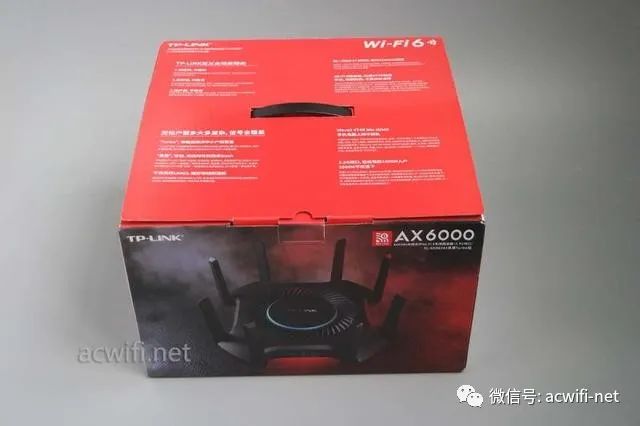
Opening it up:

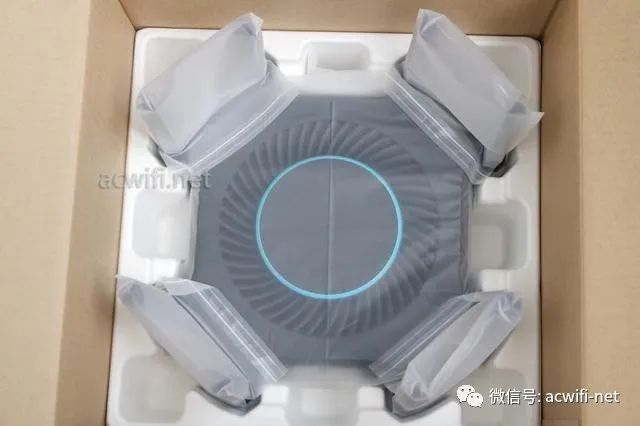
All accessories:
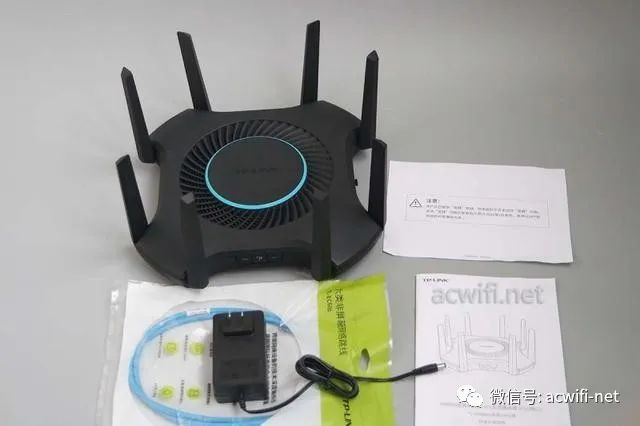
The power supply is quite large and well-specified, which is commendable, rated at 12V/4A. It comes with a one-meter long Cat 6 Ethernet cable.
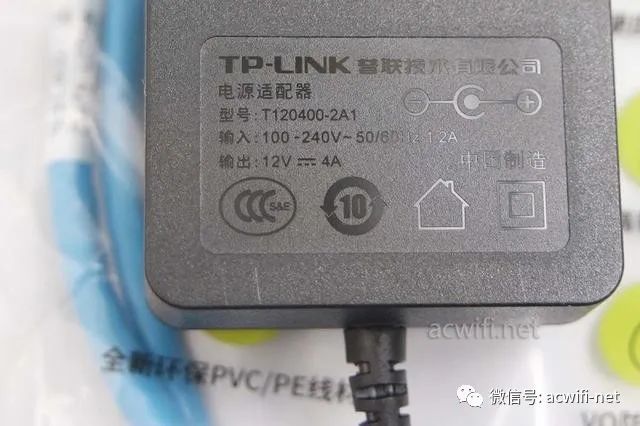
Several ports: the deep blue one on the left is the 2.5G port, which can be freely switched in the internet settings interface. For example, if the 2.5G port is set as WAN, then the adjacent light blue port is a Gigabit LAN port; if the WAN port is set to use the light blue Gigabit port, then the deep blue port becomes a 2.5G LAN port.
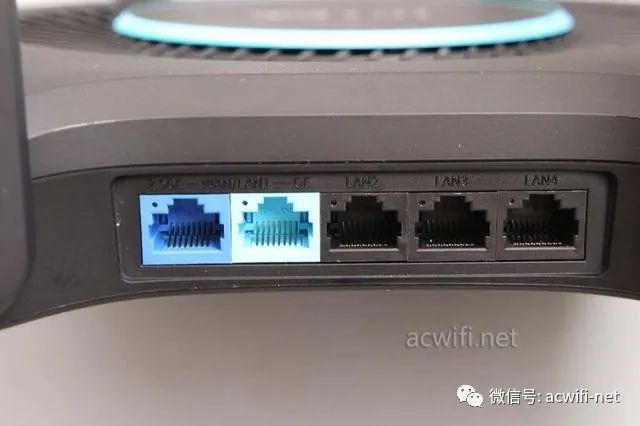
I also bought the ASUS AX6600 (a set of XT8), and its port layout is as follows:
The 2.5G port on the ASUS can only be used as a WAN port in router mode, and there is no switching option in the system. To use it as a LAN port, it can only be switched to AP mode, making all ports LAN ports. I consulted ASUS technical support, and they confirmed there is no switching option.
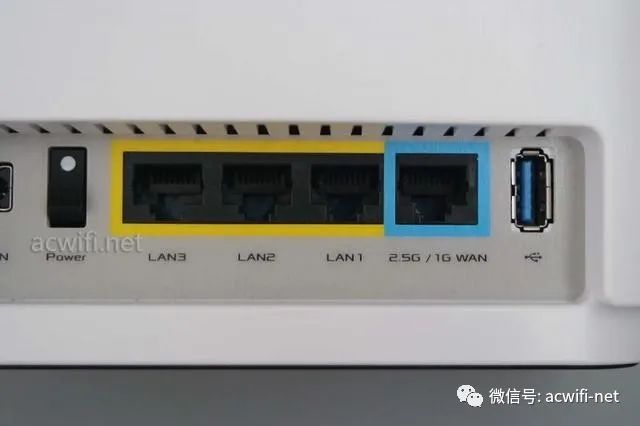
The 2.5G network card is also quite cheap; I bought two. After purchasing the first one, I found out the TP-LINK one was only 89 yuan, so I bought the TP-LINK one for the second card. Both use the RTL8125D chip. The only difference is that the TP-LINK does not have a heatsink, while the GRiS has a heatsink but is over 20 yuan more expensive.
The network card is installed in the computer; I only took a photo of the packaging:
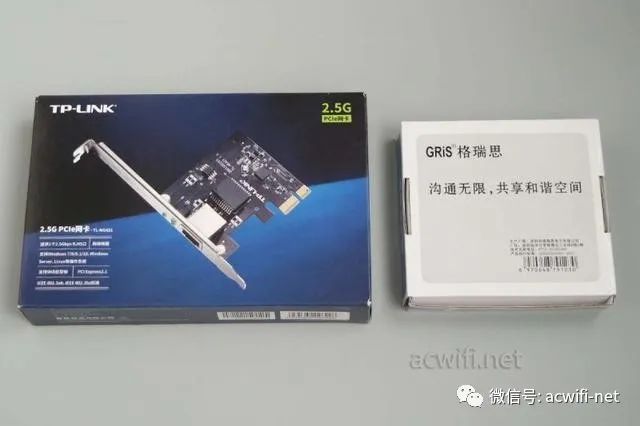
On the back, there is an SFP fiber port (Gigabit rate), a TYPE-C port, and a USB 3.0 port.
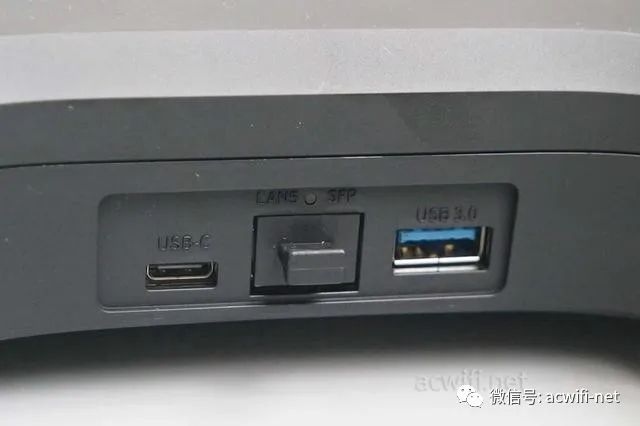
It was difficult to disassemble, with many tight clips. After 44 minutes, I opened the top cover:
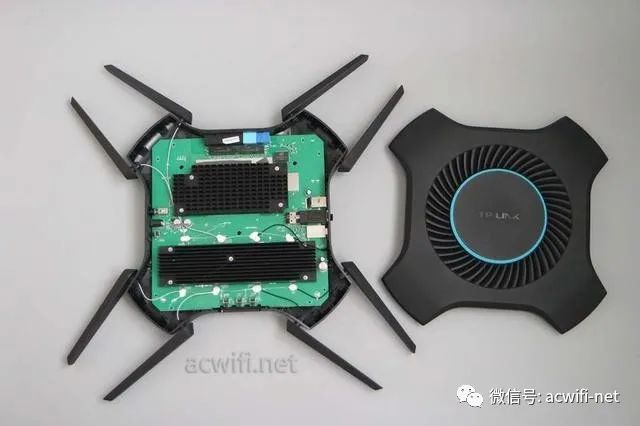
There are two large aluminum heat sinks, most of the weight comes from these; this is the heaviest TP-LINK wireless router I have touched so far.
Looking closer, there are four 2.4G antennas and four 5G antennas, all the connectors are glued. The antenna connectors must be removed separately to continue disassembling the motherboard.
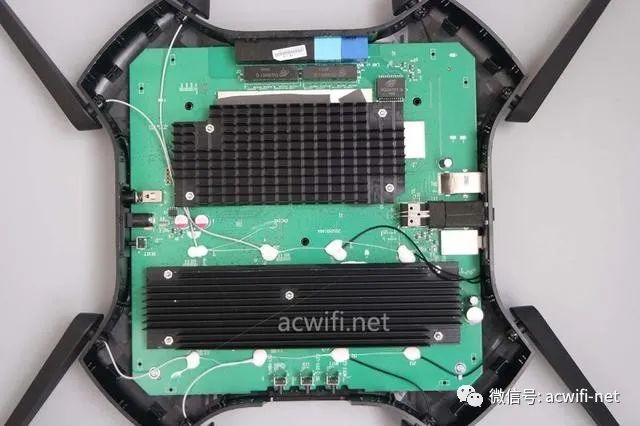
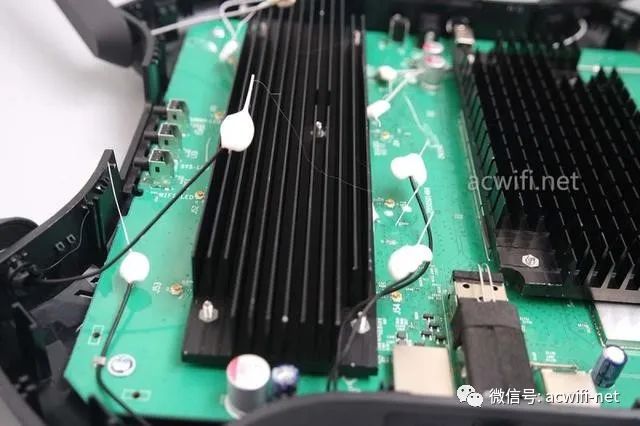
Fiber port:
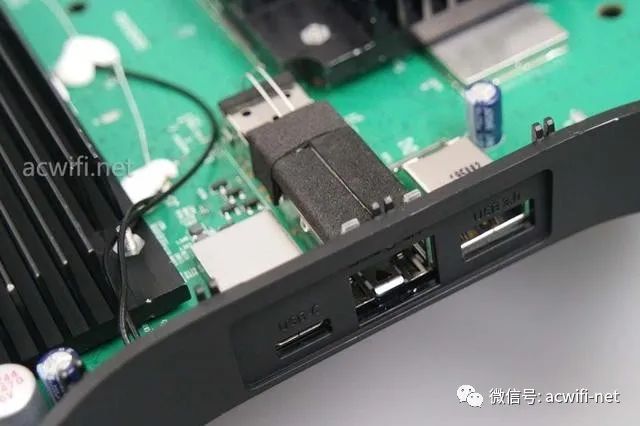
Next to the 2.5G port, it is labeled: LAN or WAN, the light blue port is WAN or none.
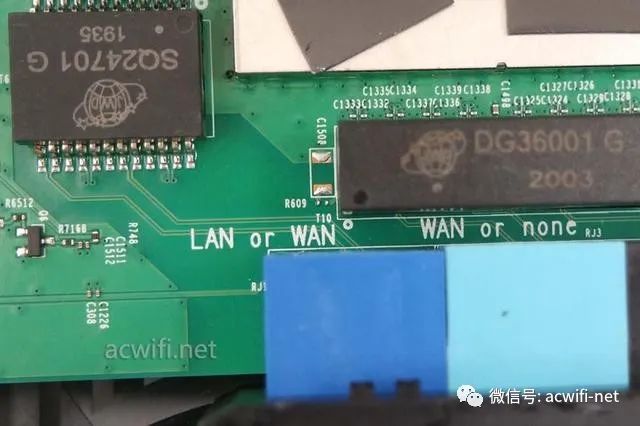
Removing the motherboard is also not easy; it is tightly secured on all sides. I managed to take out the motherboard:
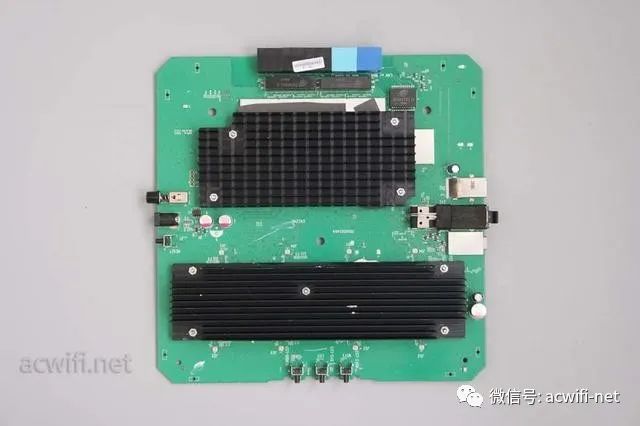
The motherboard dimensions are approximately 22x22cm.
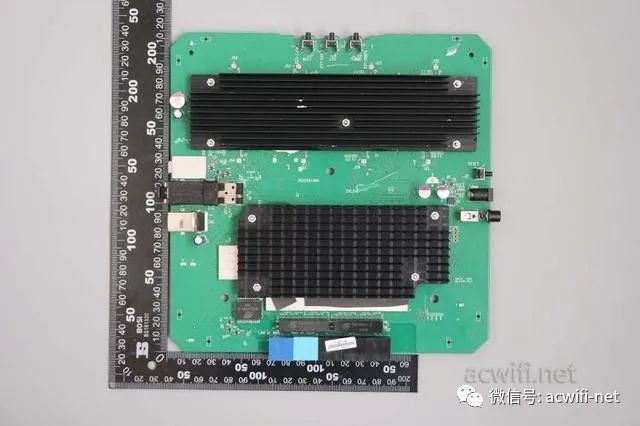
The back of the motherboard:
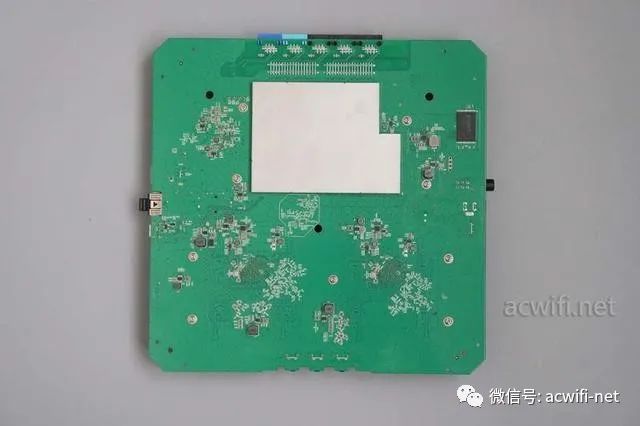
USB power supply, wireless chip power supply, and CPU power supply are all on the bottom of the motherboard. There is also a shield, which should be under the CPU; let’s take a look:
Inside the shield, there is a Gigabit switch chip, model RTL8211FS. Next to the motherboard, there is a NAND Flash memory chip, model F59L2G81A, with a capacity of 256MB. This is a huge capacity compared to TP-LINK routers.
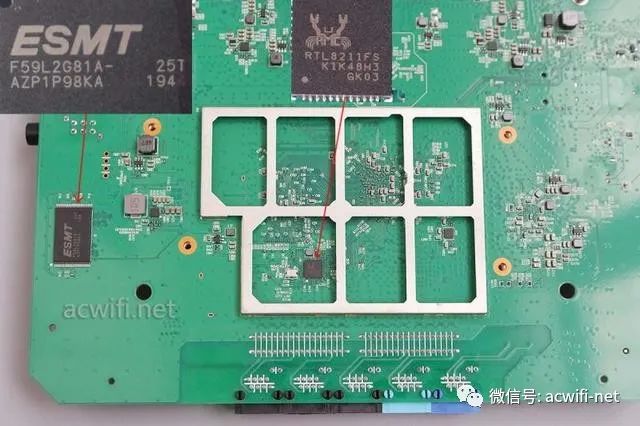
After removing the two large heat sinks, the left heat sink uses thermal grease in contact with the shield, while the right one uses several silicone pads.
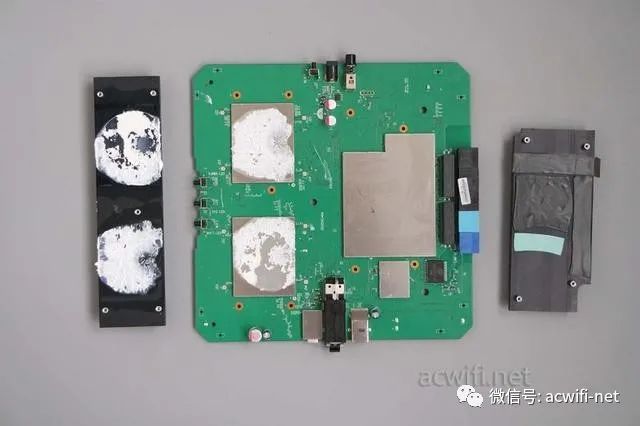
Removing the shield:
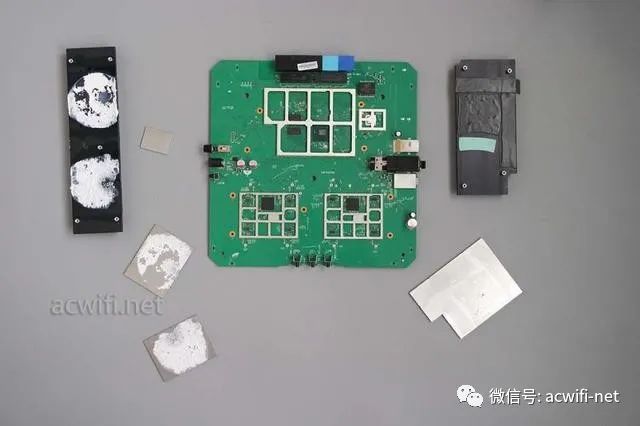
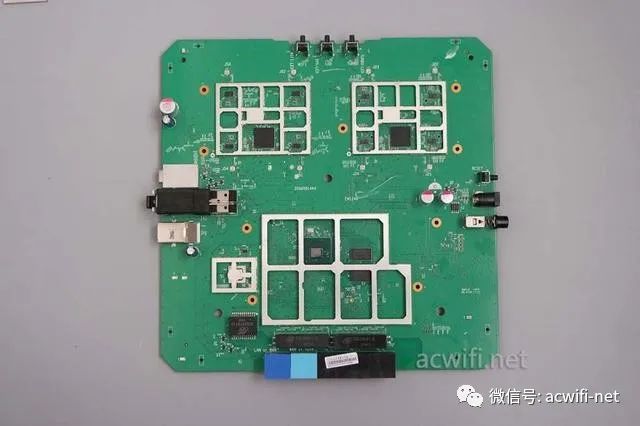
First, let’s look at the CPU, which is the BCM4908, a quad-core 1.8GHz Cortex-A53 CPU. The ASUS AX88U, AX11000, and Netgear RAX80, RAX200 also use this chip.
Next to the CPU, there are two memory chips, model M15T4G16256A, each with a capacity of 512MB, totaling 1GB of memory.
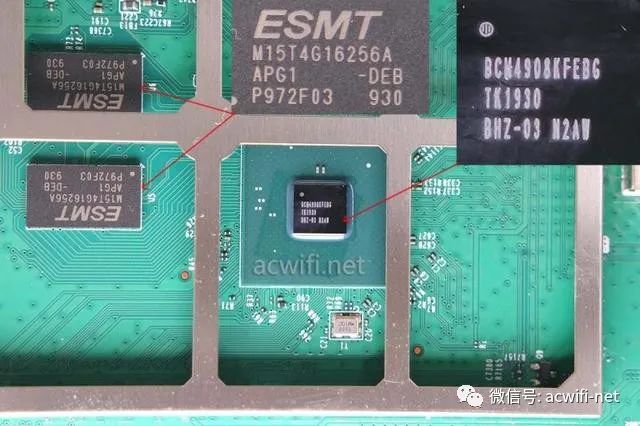
Surrounding the CPU, there is a chip whose model is not visible; I suspect it is the 2.5G network chip, model BCM54991E. The Broadcom solution for the 2.5G port likely uses this chip.
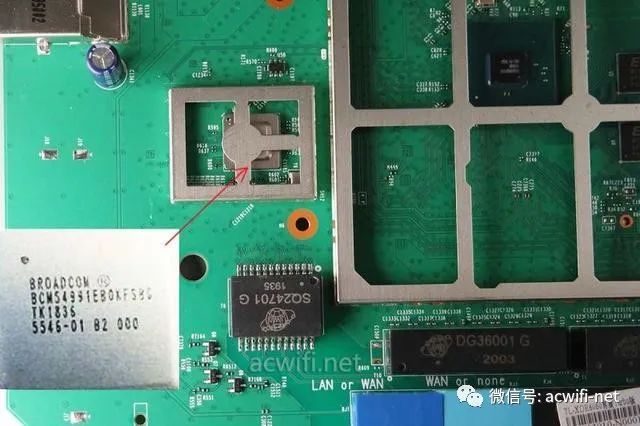
The 2.4G wireless chip model is BCM43684, 4×4 MIMO, with a maximum rate of 1.2Gbps in 40M bandwidth and 802.11ax mode. For phones with 2×2 MIMO, the maximum rate is 573Mbps (like the Xiaomi 10). If a phone only supports 20MHz bandwidth, such as the IQOO3, the rate is only 286Mbps.
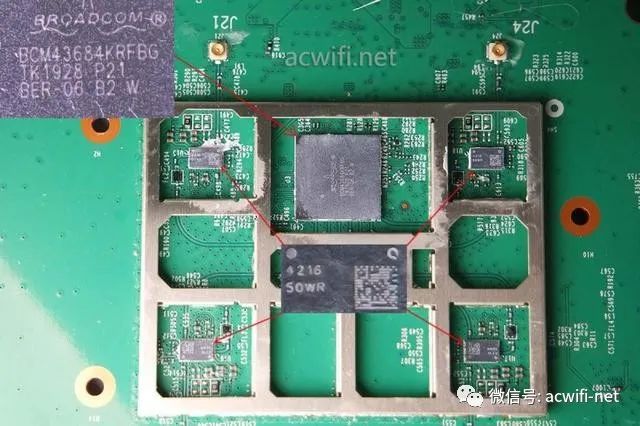
Surrounding the wireless chip are four FEM chips, marked with 4216, model QPF4216. The Qorvo® QPF4216 is an integrated front-end module (FEM) designed for Wi-Fi 802.11ax systems.
It integrates a PA (Power Amplifier) and LNA (Low Noise Amplifier). Its parameters are as follows:
2400-2500 MHz POUT = +22 dBm MCS11 HE40 -43 dB Dynamic EVM POUT = +24 dBm MCS8/9 VHT40 -35 dB Dynamic EVM POUT = +25 dBm MCS7 HT20/40 -30 dB Dynamic EVM POUT = +26 dBm MCS0 HT20 Spectral Mask Compliance Optimized for +5 V Operation 32 dB Tx Gain 1.8 dB Noise Figure 15.5 dB Rx Gain & 7 dB Bypass Loss 15 dB 5 GHz Rejection on Rx Path Integrated Quasi-Log Power Detector
HE40 refers to Wi-Fi 6 40MHz bandwidth, and MCS11 refers to the 1024-QAM modulation method. Under these conditions, the output power is +22 dBm = 160mW. To achieve a strong 2.4G signal, it can be set to 64-QAM and 20M bandwidth, resulting in +25 dBm = 320mW. The data looks like this. If you’re interested, you can try it out.
The 5G wireless chip model is also BCM43684, 4×4 MIMO, supporting 160MHz bandwidth, with a maximum rate of 4.8Gbps. For the Xiaomi 10, which only supports 80MHz bandwidth, the connection rate is 1.2Gbps.
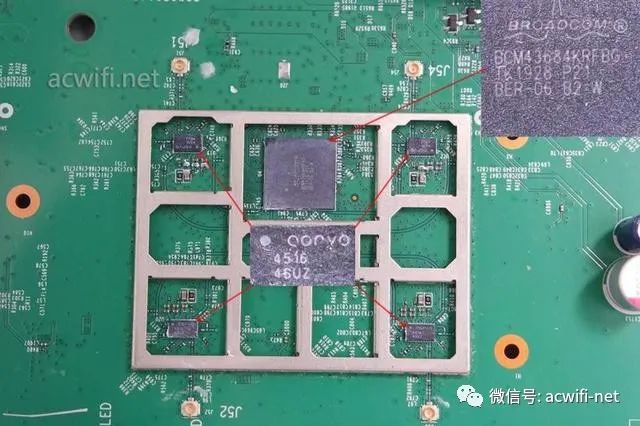
Surrounding it are four FEM chips, marked with 4516, model QPF4516, but I couldn’t find detailed information; I will supplement it later when I find it.
Thus, the teardown is complete.
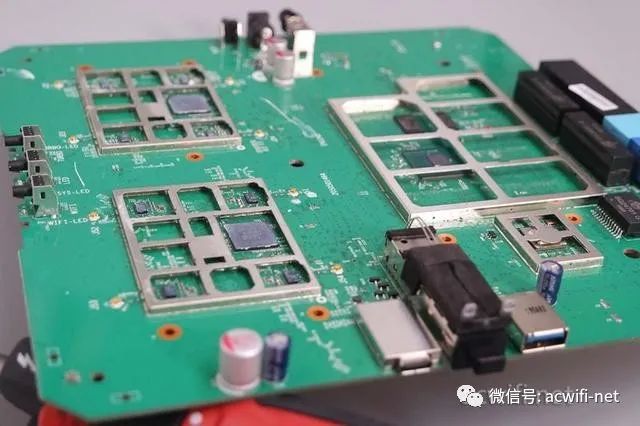
Let’s do a simple speed test with the ASUS AX6600. The AX6600 is tri-band, with one 5G chip integrated into its CPU BCM6755, which can only operate on low channels, while the other 5G chip BCM43684 is the same as both devices, but can only be used on high channels. The 2.4G channel is 9, the 5G low channel is 44, and the 5G high channel is 161. (The ASUS AX6600 is set to the US region, while TP defaults to signal enhancement.)
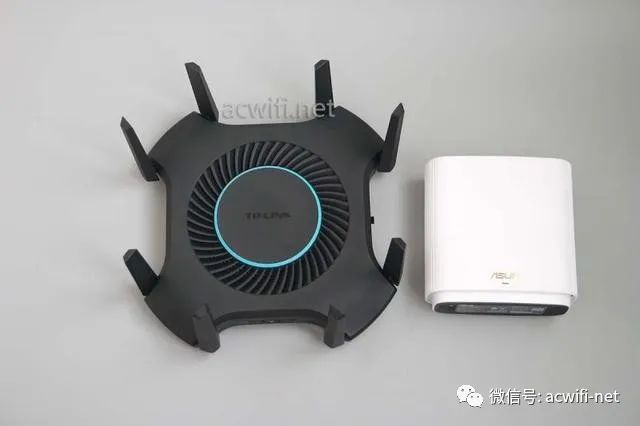
Using the Xiaomi 10 phone standing at point D downstairs, I connected and tested the speed three times, with the following results:
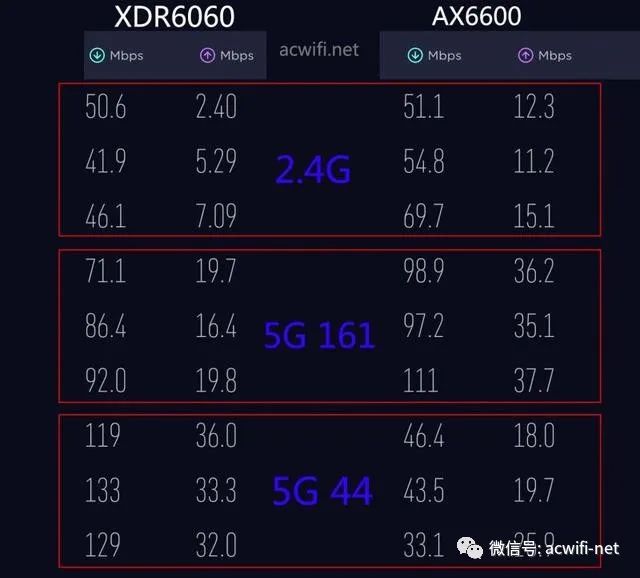
TP’s 2.4G and high channel 5G are slightly slower than ASUS, but not by much. However, in the low channel 5G, TP is significantly faster than ASUS AX6600, but the two 5G chips are different.
I also did a simple test of the USB 3.0 speed; the TP XDR6060 achieved a read speed of 148MB/s and a write speed of 117MB/s under the 2.5G port. It can be accessed remotely. More detailed testing will be done later; this article is just a teardown.
With the same CPU and wireless chips as the ASUS AX88U and Netgear RAX80, but with an additional 2.5G port and a price that is several hundred yuan cheaper, the XDR6060 is more attractive. I just hope TP can extend the warranty period for this model to two years. What? Can it flash third-party firmware?? I don’t know, and I don’t really care. If you want more features, you can pay over 80 yuan for any firmware to use as the main router, and it works well.